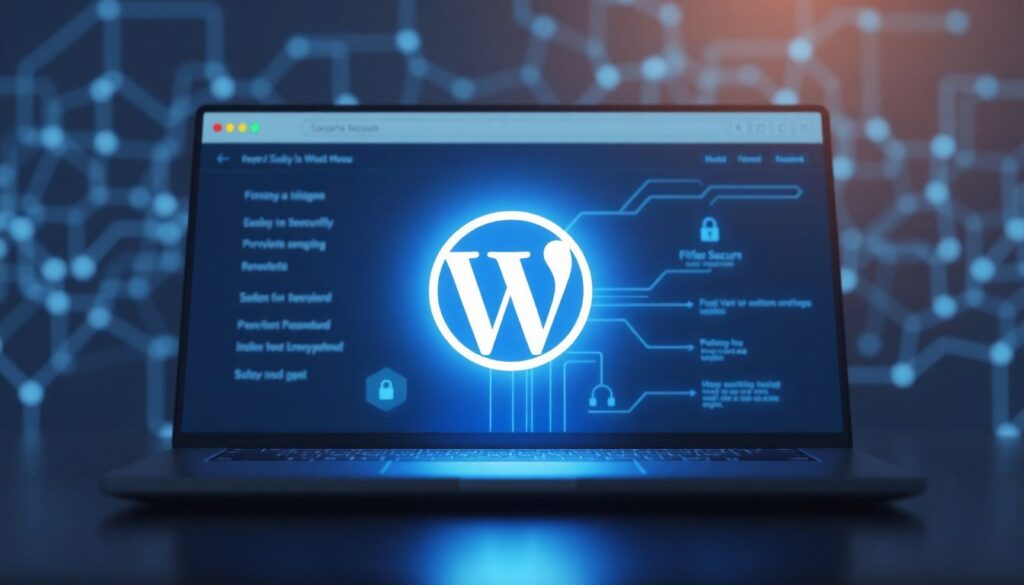WordPress powers over 40% of all websites, making it a prime target for hackers. In fact, roughly 90,000 websites are hacked each day (source: Wordfence). The consequences of these breaches can be severe, including data loss, reputational damage, and financial losses. Therefore, safeguarding your WordPress site is non-negotiable. This guide offers actionable steps to significantly enhance your WordPress site’s security.
Choosing and Configuring a Robust WordPress Hosting Provider
Selecting a Reliable Host: Factors to Consider
When it comes to security, your choice of hosting provider is crucial. Managed hosting typically offers stronger security features than unmanaged hosting. Managed hosts often provide:
- Automatic updates
- DDoS protection
- Regular backups
Reputable hosting providers known for strong security practices include:
Server-side security is also vital as it helps protect against common threats.
Essential Hosting Security Configurations
An SSL certificate encrypts data exchanged between your site and users. Obtain and install an SSL certificate through your hosting provider or a third-party vendor. Here are essential configurations to consider:
- Enable firewalls
- Implement DDoS protection
- Set up regular backups using plugins or external services
Strengthening Your WordPress Core and Plugins
Keeping WordPress Updated: A Critical First Step
Regular updates to the WordPress core are crucial. Enable automatic updates to keep your site secure. According to multiple reports, outdated versions of WordPress are often exploited to gain unauthorized access (source: Sucuri).
Don’t ignore the importance of keeping themes and plugins updated. Outdated themes or plugins can leave significant vulnerabilities.
Plugin Security Best Practices
Choosing reputable and well-maintained plugins lowers the risk of security breaches. Make it a habit to frequently check for updates and disable any unused plugins. Poorly coded plugins often lead to security issues. For example, the plugin WP GDPR Compliance had vulnerabilities that were exploited (source: Wordfence).
Theme Security Considerations
Using nulled or pirated themes poses significant risks. Always select themes from trusted sources and ensure they are regularly updated. Check the theme code for potential vulnerabilities; resources are available for code review.
Implementing Robust User and Password Security
Choosing Strong and Unique Passwords
Complex passwords are your first line of defense. Utilize password managers for secure storage. Avoid weak passwords, which are easy to guess. Follow these tips for creating strong passwords:
- Combine uppercase and lowercase letters
- Include numbers and special characters
- Make them at least 12 characters long
Multi-Factor Authentication (MFA): A Crucial Layer of Defense
MFA adds an extra verification step before granting access. It typically involves entering a code sent to your phone. To enable MFA:
- Install a plugin like Google Authenticator or Authy.
- Follow the plugin’s instructions to set it up.
This simple step greatly enhances your security posture.
Managing User Roles and Permissions
Assign appropriate user roles to minimize risks. Implement the principle of least privilege, meaning users should have only the permissions they need. Regularly review user roles and permissions to eliminate unnecessary administrative privileges.
Leveraging Security Plugins and Tools
Choosing the Right Security Plugin
Evaluate popular security plugins such as:
- Wordfence: Offers firewall and malware scanning features.
- Sucuri: Provides robust security features and monitoring.
Consider the following features in a security plugin:
- Firewall protection
- Malware scanning
- Brute force attack prevention
Decide between free and premium options based on your site’s needs.
Utilizing Security Scanners
Regular scans for malware and vulnerabilities are key. Tools like Wordfence and Sucuri Scanner integrate seamlessly with WordPress. Understand scan results and take prompt action to address any issues.
Implementing a Web Application Firewall (WAF)
A WAF protects against common web attacks like SQL injection and cross-site scripting. It filters and monitors HTTP traffic. Popular WAF options for WordPress include:
- Cloudflare
- Sucuri Firewall
Using a WAF can significantly improve your site’s security.
Monitoring and Maintaining Website Security
Regular Security Audits: A Proactive Approach
Conducting regular security audits helps identify vulnerabilities. Use tools like WP Security Audit Log to monitor changes and activities. Consider these steps:
- Review user access logs.
- Check for unauthorized file changes.
- Use online auditing tools for in-depth analysis.
Monitoring Website Activity for Suspicious Behavior
Keep an eye on website logs for unusual activity. Look for:
- Unsuccessful login attempts.
- Strange IP addresses accessing your site.
- Sudden spikes in traffic.
Tools like Jetpack and Google Analytics can aid in monitoring.
Staying Informed About Emerging Threats
Stay updated on the latest security threats and vulnerabilities. Subscribe to services like Wordfence Threat Intelligence. Being informed allows for quick action when new vulnerabilities are discovered.
Conclusion:
Enhancing the security of your WordPress site requires ongoing effort and vigilance. Regular updates, strong passwords, and security plugins go a long way in protecting your site. Start implementing these strategies today to create a safer online environment for your visitors.


